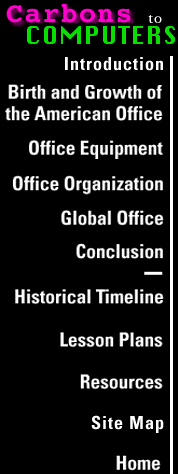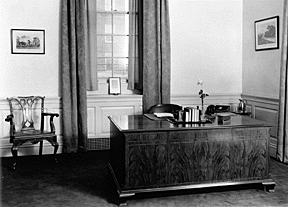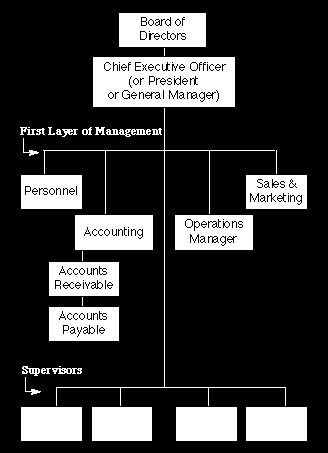
Status
Sociologists have long observed the connection between the design of environments and the power relations that determine what goes on there. Whether an office, a factory, or a prison, physical characteristics can tell us who is powerful, who is not; who watches, who is watched; who dictates, who takes dictation.
Even as the nobility and high clergy in feudal Europe, for example, marked their elevated status with their clothing and surroundings, so too twentieth-century culture makes such distinctions. From its beginnings, the office reflected the unequal status of its occupants. Almost anything inside an office can be made bigger, smaller, more expensively, or less expensively than anything else. In the same way, the feudal lord's robes often took hundreds more yards of fabric than the simple garb of the peasant who served him.

Offices reflect status in many ways, including the following:
- size of the office itself, number of windows, top floor or lower floor in the building
- carpeted or uncarpeted floors, cost of the carpeting; hardwood floors with oriental rugs versus broadloom carpeting
- size of desk, hardwoods versus veneers and plastics or metal; lock on desk
- "executive washroom" or dining area, that is, private areas and services for some members of the hierarchy, not others
- chairs, comfortable, with arms and cushions, versus plain woods, or designed to look like home furniture versus functional--meant to promote comfort for the sake of efficiency
- privacy itself--the executive suite, guarded by a personal secretary who admits or denies admittance to visitors, versus shared open space, no locks on desks, no personal phones
- works of art on walls versus plain walls, wallpaper or wood paneling versus paint, metal or fabric partitions
These are some of the ways in which organizations visually and physically represent the intangible relations of power and authority in the office.
 Typical office organization shows three levels
of management under the hoard of directors: a chief executive officer, a
tier of middle managers, and a tier of supervisors. Actual businesses show
great variety in job titles and functions within this basic structure.
Typical office organization shows three levels
of management under the hoard of directors: a chief executive officer, a
tier of middle managers, and a tier of supervisors. Actual businesses show
great variety in job titles and functions within this basic structure.